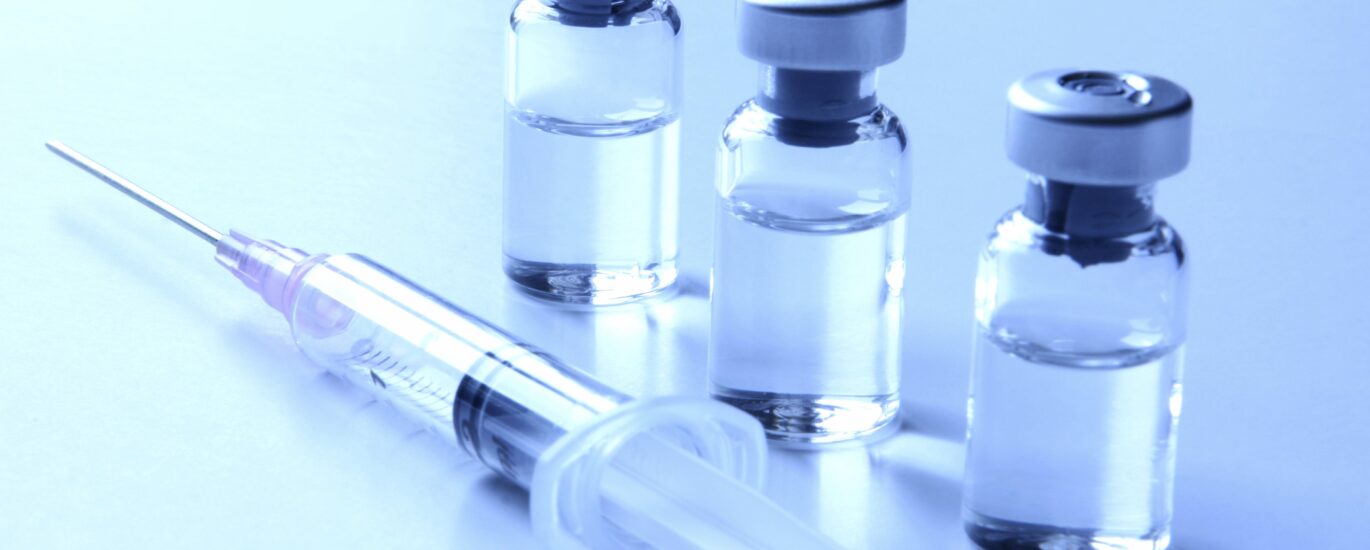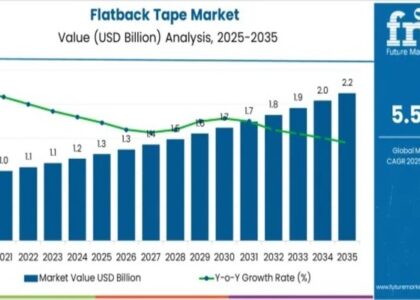The prefilled formalin vials market is estimated to reach USD 459.3 million in 2025. It is estimated that revenue will increase at a CAGR of 6.9% between 2025 and 2035. The market is anticipated to reach USD 661.8 million by 2035.
The prefilled formalin vials market has become an essential component within the healthcare and pathology sectors. These vials are widely used for the preservation of biological specimens, ensuring sample integrity during transportation and analysis. The convenience of prefilled formalin vials, which come with precise and controlled volumes of formalin solution, has increased their adoption in laboratories, hospitals, and research centers. The market reflects growing awareness of the importance of sample preservation to facilitate accurate diagnostics and research outcomes.
Get Sample Report: – https://www.futuremarketinsights.com/reports/sample/rep-gb-7582
Prefilled formalin vials provide a sterile and ready-to-use solution, reducing handling errors and exposure risks associated with traditional formalin bottles. Their compact and user-friendly design enhances safety for healthcare professionals and improves workflow efficiency. Over time, advancements in vial materials and sealing technologies have contributed to increased reliability and reduced contamination risks. As a result, the prefilled formalin vials market continues to expand, supported by the rising demand for standardized specimen collection and preservation tools.
Market Trends
Several trends are shaping the dynamics of the prefilled formalin vials market. One of the prominent developments is the shift toward automation and standardization in specimen management. Laboratories are increasingly integrating prefilled formalin vials as part of their automated workflows to minimize human errors and enhance sample traceability. This transition is driving demand for vials compatible with automated handling systems.
Sustainability is also influencing market trends. Manufacturers are exploring eco-friendly packaging and recyclable materials for prefilled formalin vials, responding to environmental regulations and growing consumer consciousness about waste reduction. Innovations such as biodegradable vial components and reduced plastic use are gaining traction.
Another noticeable trend is the expansion of product portfolios with vials available in various sizes and formulations. This diversification caters to different specimen types and volumes, accommodating specific laboratory and clinical needs. Additionally, improvements in vial sealing mechanisms and leak-proof designs are becoming standard to ensure safe transport and storage, even over long distances.
Challenges and Opportunities
The prefilled formalin vials market faces challenges that stem primarily from regulatory scrutiny and safety concerns. Formalin is a hazardous chemical, and its handling is subject to stringent regulations worldwide. Ensuring compliance with these standards while maintaining cost-efficiency remains a significant hurdle for manufacturers. Moreover, potential health risks to users from formalin exposure necessitate continuous improvements in vial safety features and packaging.
Supply chain disruptions also pose a challenge, particularly for raw materials used in vial production. Fluctuating costs and availability of high-quality plastics and chemicals can impact production timelines and pricing structures.
Despite these challenges, the market presents numerous opportunities. The increasing prevalence of cancer and other diseases requiring biopsy and histopathological examinations is driving demand for reliable specimen preservation solutions. Emerging markets, where healthcare infrastructure is rapidly improving, represent a fertile ground for market growth. The adoption of advanced diagnostic procedures in these regions is expected to boost demand for prefilled formalin vials.
Collaborations between vial manufacturers and healthcare providers offer potential for innovation and customized solutions tailored to specific clinical workflows. The integration of digital technologies, such as vial tracking systems using RFID or barcodes, can further enhance specimen management efficiency and safety, creating new avenues for growth.
Key Regional Insights
Geographically, the prefilled formalin vials market is characterized by diverse growth patterns influenced by healthcare infrastructure and regulatory environments. Regions with well-established healthcare systems show steady demand driven by routine pathological testing and research activities. In such regions, innovation and product differentiation are critical competitive factors.
Emerging regions are witnessing accelerated growth due to expanding healthcare access and investments in diagnostic facilities. These areas are benefiting from increased government initiatives focused on early disease detection and improved laboratory services. Market players often tailor their strategies to address region-specific regulatory requirements and healthcare practices.
North America and Europe continue to be important markets, supported by the presence of key manufacturers, advanced research institutions, and stringent quality standards. Asia Pacific is emerging as a rapidly growing region due to rising awareness about health conditions, improving medical infrastructure, and increasing investments in healthcare technologies.
In Latin America and the Middle East & Africa, the market is gradually expanding, supported by government healthcare reforms and growing private sector participation. However, these regions often face challenges related to supply chain logistics and regulatory complexities, which require strategic planning by market participants.
Competitive Outlook
The prefilled formalin vials market is highly competitive, with numerous global and regional players striving to innovate and capture market share. Competitive dynamics are influenced by factors such as product quality, technological advancements, pricing strategies, and distribution networks.
Manufacturers focus on developing vials that offer superior safety, ease of use, and compatibility with laboratory automation systems. Companies investing in research and development to improve vial materials and sealing technologies often gain a competitive edge. Strong collaborations with healthcare providers and distributors are crucial to expanding reach and enhancing customer loyalty.
In addition to innovation, companies compete on regulatory compliance and certification, as stringent standards play a vital role in buyer decisions. Brand reputation and after-sales support also influence customer preferences, especially in highly regulated markets.
The market witnesses frequent product launches and partnerships as companies strive to enhance their portfolios and geographic presence. Strategic acquisitions and alliances are common strategies to accelerate growth and diversify product offerings.
Top Companies
Leading companies in the prefilled formalin vials market include established pharmaceutical and medical device manufacturers with a strong focus on pathology consumables. These companies invest heavily in product development, regulatory approvals, and global distribution channels.
Some key players have expanded their offerings to include complementary specimen collection and transport products, thereby providing comprehensive solutions to healthcare facilities. Innovation-driven companies emphasize eco-friendly materials and user-centric designs to meet evolving market demands.
Several firms also engage in educational initiatives and collaborations with clinical laboratories to promote the benefits of prefilled formalin vials, thus increasing market penetration. The focus on safety enhancements and sustainable practices reflects a broader industry trend toward responsible manufacturing.
Explore In-Depth Analysis-Click Here to Access the Report:- https://www.futuremarketinsights.com/reports/prefilled-formalin-vials-market
Segmentation Outlook
The segmentation of the prefilled formalin vials market provides insights into the varied applications and user preferences. The market can be divided based on vial volume, end-user type, and distribution channel.
Volume segmentation caters to different sample requirements, ranging from small vials used for minor tissue biopsies to larger vials designed for bulk specimen preservation. The availability of multiple vial sizes enhances flexibility for clinical and research applications.
End-users include hospitals, diagnostic laboratories, research institutions, and pathology centers. Hospitals and diagnostic labs constitute the largest segment due to the routine nature of specimen collection and preservation in these settings. Research institutions, although smaller in volume, drive demand for specialized and high-quality vials.
Distribution channels vary from direct sales and hospital tenders to third-party distributors and online platforms. The growth of e-commerce in medical supplies has also influenced buying patterns, providing easier access to prefilled formalin vials, especially in remote locations.
About Future Market Insights (FMI)
Future Market Insights, Inc. (ESOMAR certified, recipient of the Stevie Award, and a member of the Greater New York Chamber of Commerce) offers profound insights into the driving factors that are boosting demand in the market. FMI stands as the leading global provider of market intelligence, advisory services, consulting, and events for the Packaging, Food and Beverage, Consumer Technology, Healthcare, Industrial, and Chemicals markets. With a vast team of over 400 analysts worldwide, FMI provides global, regional, and local expertise on diverse domains and industry trends across more than 110 countries.
Contact Us:
Future Market Insights Inc.
Christiana Corporate, 200 Continental Drive,
Suite 401, Newark, Delaware – 19713, USA
T: +1-347-918-3531
For Sales Enquiries: sales@futuremarketinsights.com
Website: https://www.futuremarketinsights.com
LinkedIn| Twitter| Blogs | YouTube





